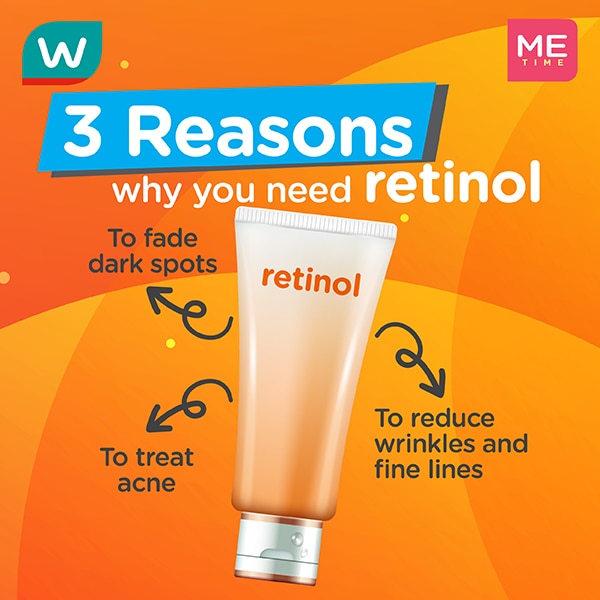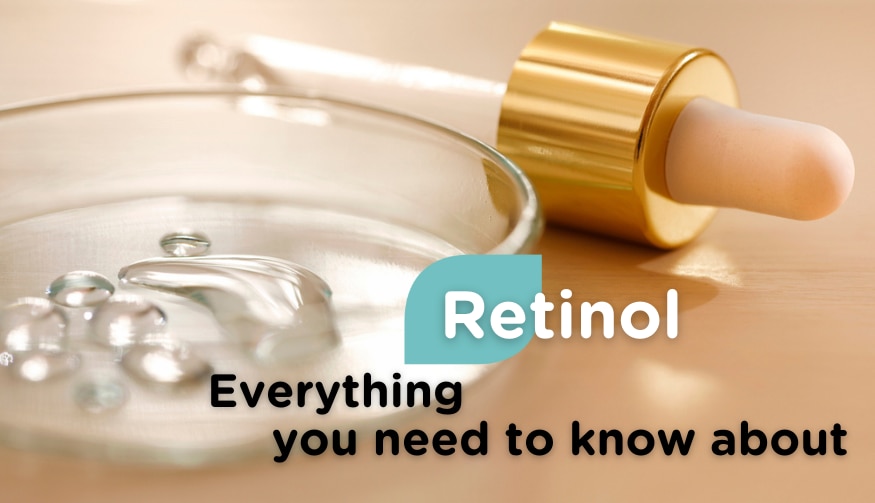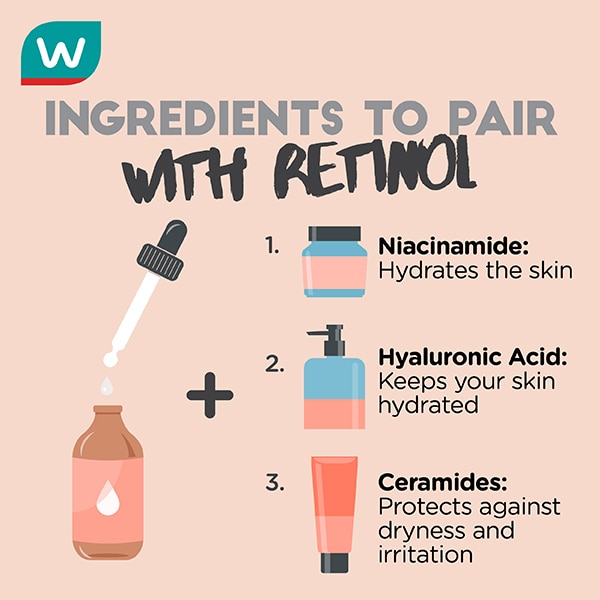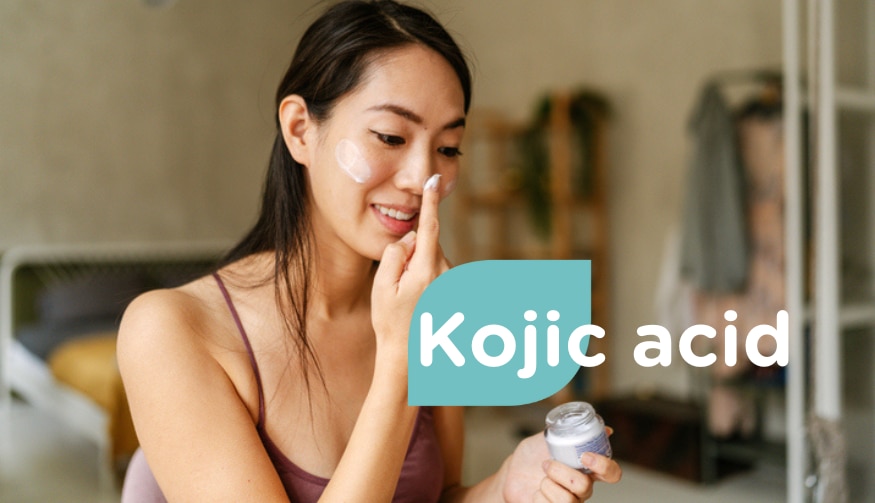Looking for a solution for youthful, radiant skin? Retinol, a potent derivative of vitamin A, is your answer. Known for reducing fine lines, improving skin texture, and combating acne, retinol offers numerous benefits for all skin types.
This guide wll explore retinol’s advantages, how to incorporate it into your routine, and potential side effects!
What is retinol?
It is a form of Vitamin A. It is an ingredient in skincare products (serums, creams) because it can speed up skin cell renewal and enhance collagen production.

1. Retinol vs. Retinoids, what’s the difference?
| Retinoids | Retinol |
| A catch-all term for vitamin A-based products | A subtype of retinoids |
| Higher strengths of retinoic acid; Mainly for acne treatments via prescription | Lower strengths of retinoic acid; Mainly for anti-ageing, hyperpigmentation, unclog pores and prevent breakout |
| Improve your acne in a short time | Takes a long time to see the effect |
| Great for severe acne-prone skin | A good start for dry skin / sensitive skin |
2. How can retinol change your skin?

Well, it’s an anti-aging hero that can significantly improve the appearance of fine lines, sun damage, dark spots, and wrinkles. Not only is it said to reverse the signs of aging after daily use, but it can also act as a preventive measure too.
Studies have shown that using an over-the-counter product with 0.1% retinol (for prolonged, regular use) significantly improved wrinkle repair, with visible improvement as early as one month.
Moreover, it is a gentle formulation for milder acne. The ingredient can control oil production and unclog pores, decreasing pore size, preventing acne from forming, and fading acne scars.
3. What are the side effects of retinol or retinoids?
Since Retinoids help to boost the turnover rate of skin cells, you may experience skin irritation, redness, dryness, peeling, or itchiness.
The side effect will last 2-4 weeks after your skin acclimatizes. It is more likely to happen when you just start to use or apply a higher concentration of the products.
Besides, using too many products can also result in undesirable side effects.
4. How to choose retinol products for your skin type?
You can choose your retinol products based on their textures: Creams are generally best for dry skin, lotions for normal to combination skin, and serums or gels for oily skin.
5. How to add retinol in your skincare routine?
The best way to introduce retinol into your skincare regime is to start with a low concentration until you build up your tolerance bit-by-bit. If you experience any redness or peeling from a higher dose, then limit the usage or lower the concentration.
4 Ways to make your retinol work better by building a tolerance

Retinol Sandwich Method
Best Ingredients to Pair with Retinol

Do’s
- Apply sunscreen, always
Retinol can thin your skin and decrease its “protective capacity”. Therefore, although retinol itself is not sun-sensitizing, you should always take measures to protect your skin from sunlight, e.g. applying sunscreen daily.
-
Be patient and stick with itAlthough there are examples that show improvements as early as a month, it can take up to 12 weeks for people to see significant changes in their skin.
Don’ts
- Do not apply it daily from the beginning
Start slow and always monitor your skin’s reaction. There is a process for your skin to get adapted to retinol. In the beginning, there may be irritation and flaky skin, see how it is getting adjusted to the ingredient. Apply with a longer interval or switch to skincare products with a lower dosage if the signs of irritation prolong.
-
Do not overuse
Use retinol only once a day and apply only a thin layer to the affected area. Remember it takes time for your skin to adjust. Even though increased dosage and frequency can speed up the process of collagen production, but it may also lead to more redness and irritation.

















